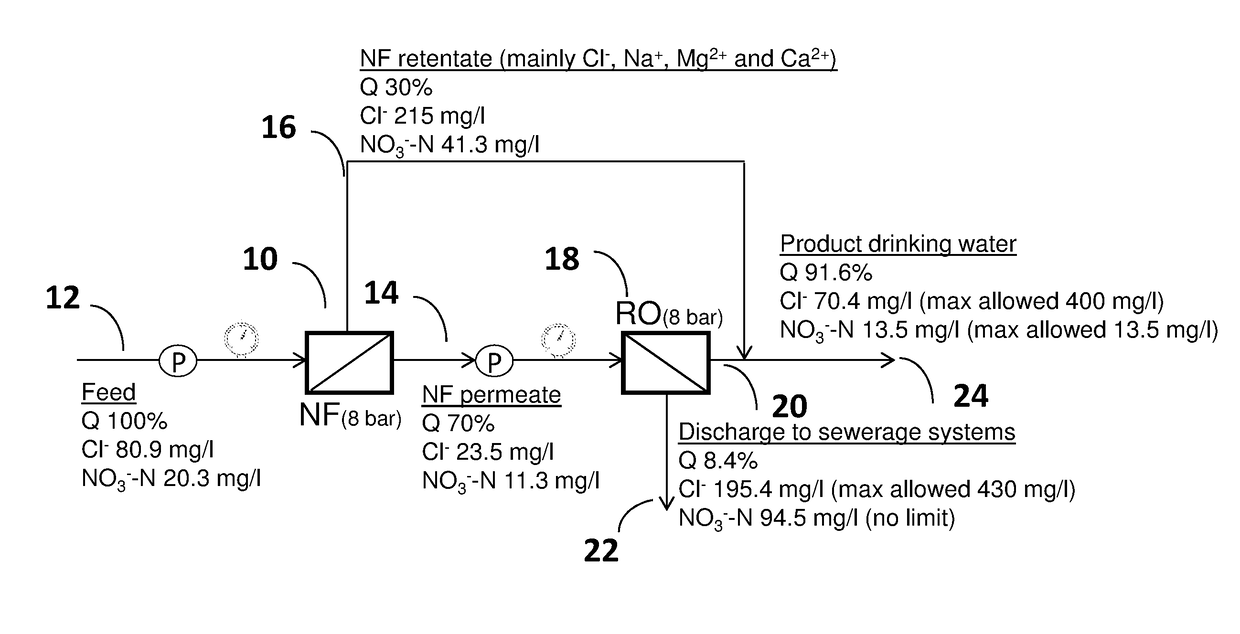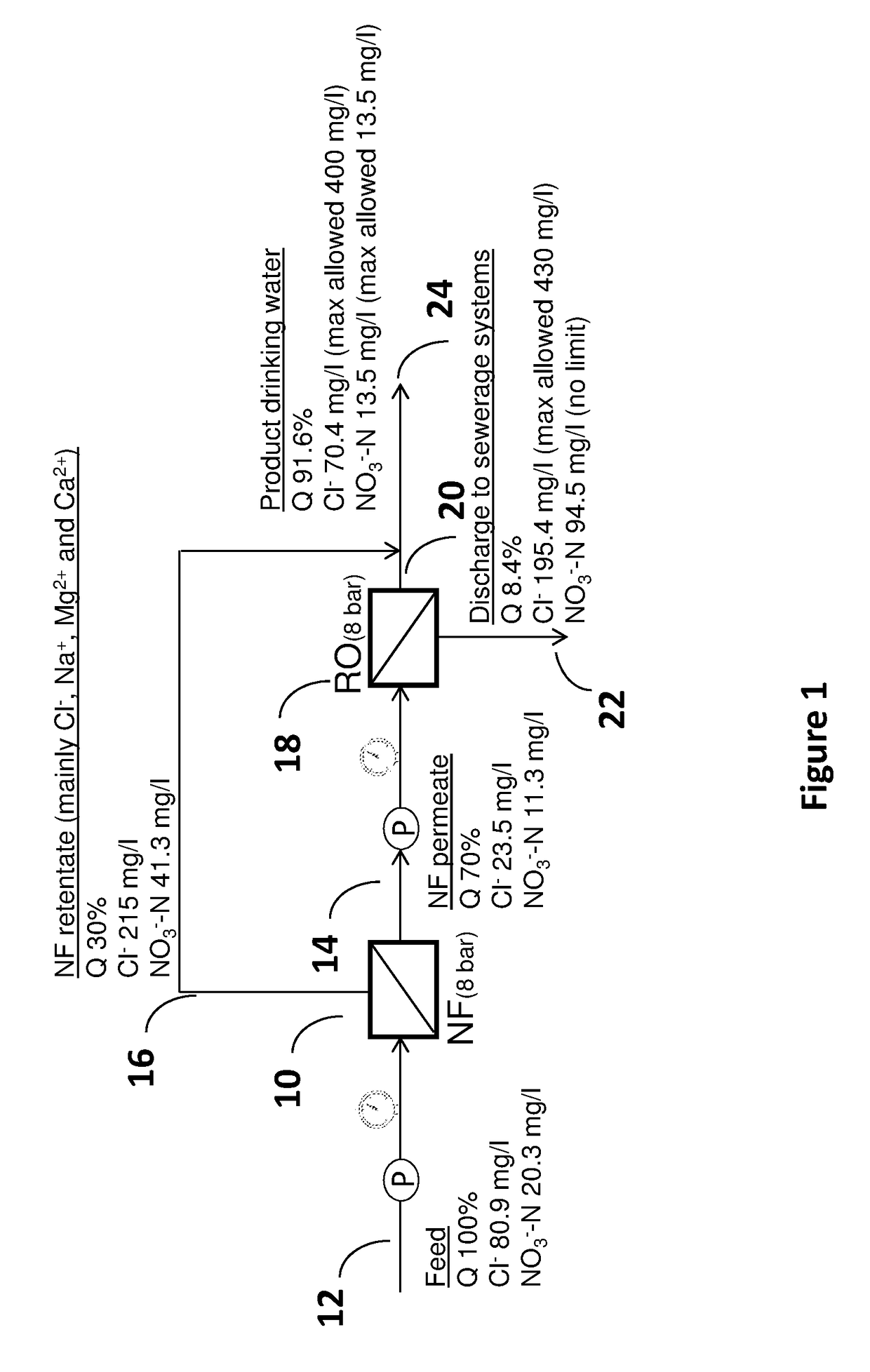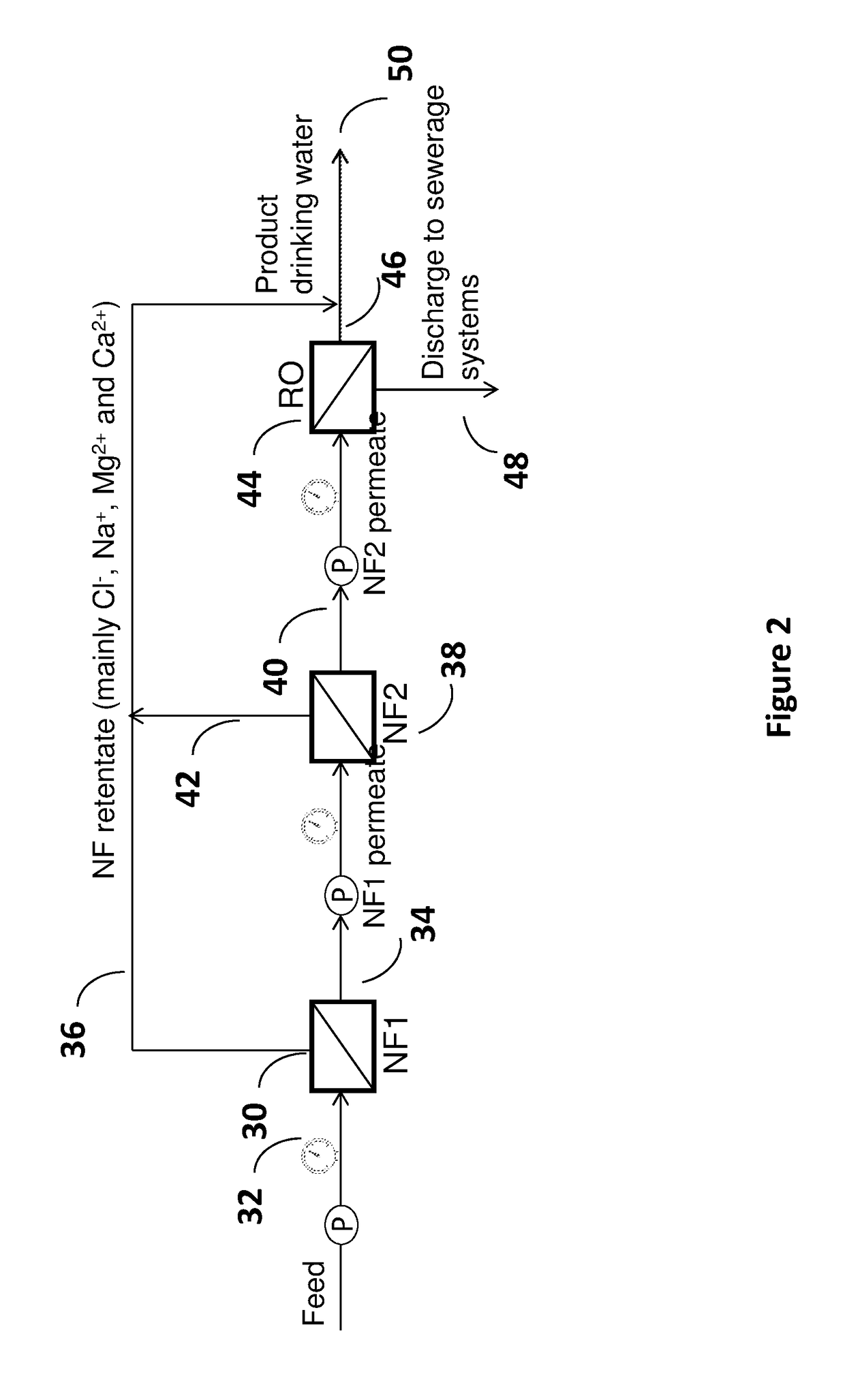Removal of nitrates from ground water
a technology of nitrates and ground water, applied in water treatment multi-stage treatments, water/sewage multi-stage treatment, membranes, etc., can solve the problems of costly solutions known to date, and achieve the effects of minimizing costs, optimizing recovery ratios, and saving energy
- Summary
- Abstract
- Description
- Claims
- Application Information
AI Technical Summary
Benefits of technology
Problems solved by technology
Method used
Image
Examples
example 1
Experimental Setup
[0075]A bench scale nanofiltration system operating in cross-flow mode with a flat sheet membrane cell was used for all membrane tests. The total membrane surface area was 48 cm2. Water was recirculated from the feed tank over the membrane cell with an applied inlet pressure of 8 bars and cross flow rate of 10 L / min. Water temperature was maintained constant at 24° C.. Six different NF membranes were tested: DL and DK (GE Osmonics), NF90, NF245 and NF270 (Dow) and TS80 (Trisep). For each membrane test, permeate and retentate were collected for further analysis throughout the whole process. The final NF recovery ratio was 70%. All experiments were carried out with real groundwater brought from the Zur Moshe well located on the coastal aquifer of Israel. The main groundwater quality parameters are shown in Table 1.
TABLE 1Composition of source waterParameterSourcepH7.2Conductivity [μS / cm]774Alkalinity [mg / L as CaCO3]166NO3−—N [mg / L]20.3Cl− [mg / L]80.9Na+ [mg / L]45.9SO42...
example 2
Preliminary NF Membrane Tests
[0083]Six NF membranes were tested in order to assess their selectivity for nitrate and chloride rejection. The results are shown in FIG. 3.
[0084]Three of the membranes showed better rejection for chloride. The combination of high chloride rejection with a reasonable selectivity ratio was observed specifically for TS80. Lower rejections of both ions, yet with prominent selectivity for chloride removal, were attained by NF270. Accordingly, it was decided to further evaluate the suitability of TS80 and NF270 for a filtration scheme consisting of single- and double NF stages, respectively.
example 3
Validation of the Mass Balance Equation
[0085]The initial (Y≈0.01), middle (Y≈0.35) and final (Y=0.7) permeate concentrations of nitrate, chloride, sodium and calcium for the single and double NF experiments were measured and compared to the calculated concentrations based on Eq. (1). In general, the higher the recovery ratio was, the higher were the deviations between measured and calculated values. Negligible deviations were obtained at Y=0.01 and Y=0.35 (data not shown). FIGS. 4 and 5 (A&B) present the measured and the calculated ion concentrations at Y=0.7 for the single and double NF experiments, respectively.
[0086]The maximal deviation between measured and calculated ion concentrations in the final permeate was lower than 10%. These minor deviations corroborate the use of the Eq. (1) for predicting the ion concentrations throughout the recovery ratio range.
PUM
 Login to View More
Login to View More Abstract
Description
Claims
Application Information
 Login to View More
Login to View More - R&D
- Intellectual Property
- Life Sciences
- Materials
- Tech Scout
- Unparalleled Data Quality
- Higher Quality Content
- 60% Fewer Hallucinations
Browse by: Latest US Patents, China's latest patents, Technical Efficacy Thesaurus, Application Domain, Technology Topic, Popular Technical Reports.
© 2025 PatSnap. All rights reserved.Legal|Privacy policy|Modern Slavery Act Transparency Statement|Sitemap|About US| Contact US: help@patsnap.com



